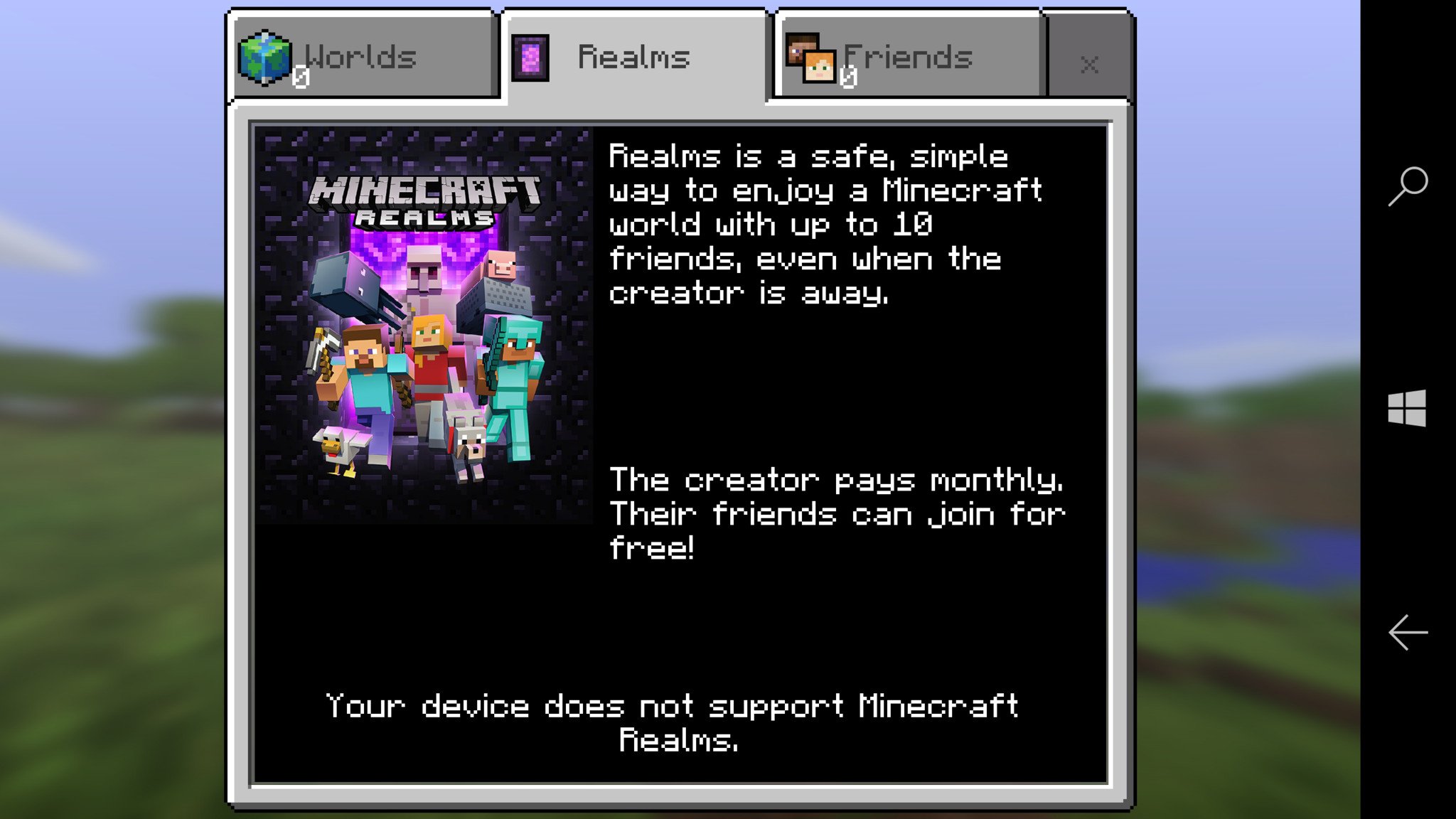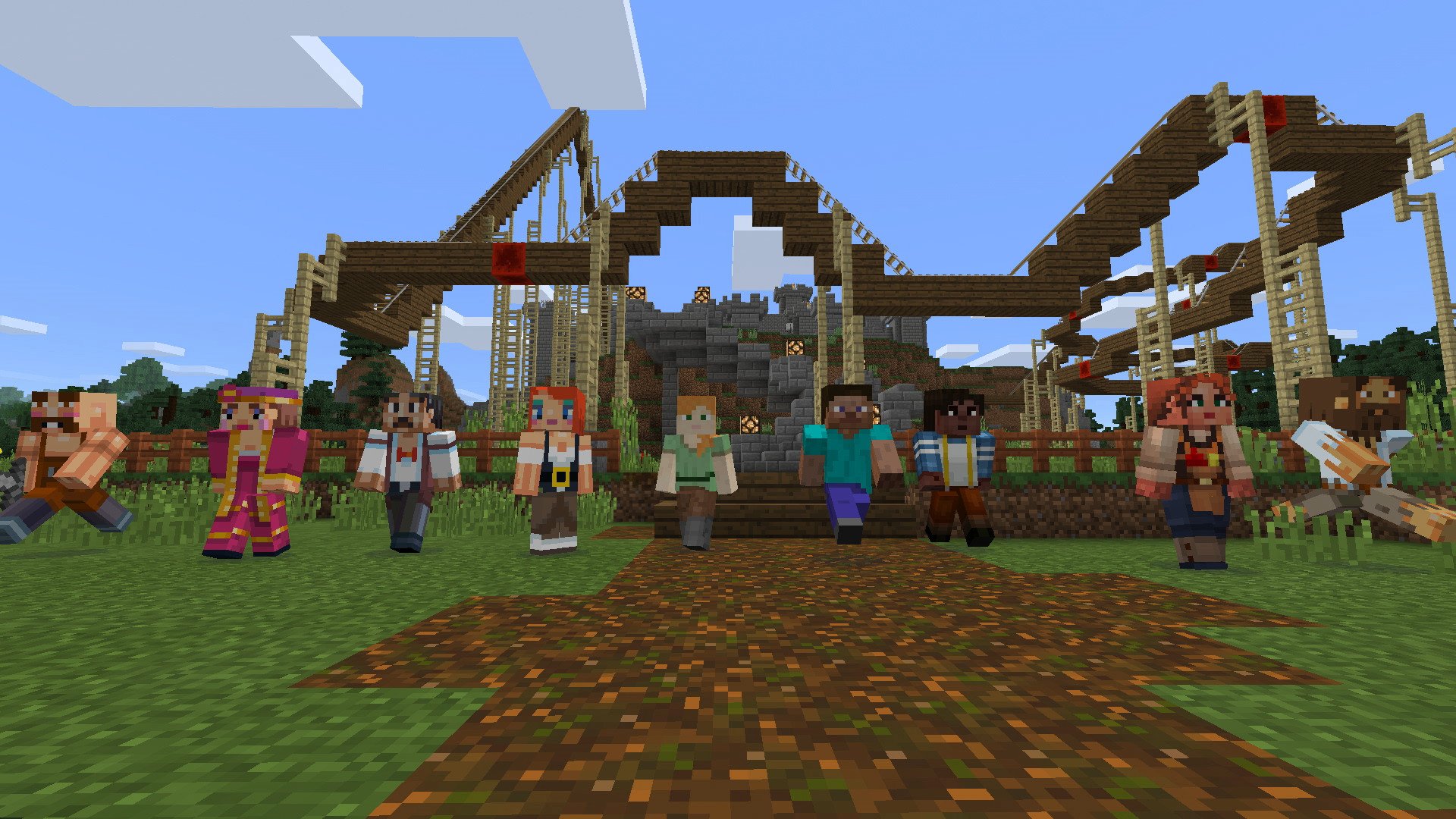I caught up with Microsoft Studios to discuss the future of Minecraft and to check out how the game will evolve in the near future.
Microsoft purchased Minecraft a couple of years back for a cool 2.5 billion dollars. Naturally, Microsoft has big plans for the franchise, and we were able to get a glimpse of those during E3 2016.
Minecraft showed off Realms for the Pocket Edition and Windows 10 tablet and PC version of the game at E3. Minecraft Realms allows players to rent a dedicated, persistent server, which friends and family can connect to and share without requiring a host to be online. Previously, Realms only supported the legacy PC and Mac versions of Minecraft, but eventually, the console versions of Minecraft will also be able to connect to a shared Realm.
In our demonstration session, we also saw how players will be able to further customize their experience across PC, tablets and phones. We also learned a bit about the future of Minecraft on Windows 10 Mobile.
What’s the deal with Minecraft on Windows phones?
One of the first questions I asked the Minecraft team was about the Windows Phone versions of the game. As Windows Central readers are no doubt aware, Windows on phones is in a strange place right now, where even Microsoft aren’t prioritizing development for some of its apps on the platform. Minecraft is no different, as the iOS and Android versions of Minecraft now support achievements, while the Windows Phone 8.1 version does not.
I asked what the plan was for the Windows Phone version of the game. Would the Pocket Edition be replaced a Windows 10 UWP version? Would it support Continuum? I mentioned how cool it would be to utilize the new Bluetooth Xbox One S controller to play Minecraft via Continuum on my Lumia 950 XL, for example.

Microsoft told me that those ideas and questions are exciting, but they have nothing to announce right now regarding their roadmap for Windows on phones. They said that the idea is prioritizing players where they’re at, effectively hinting that Windows Phone’s market share is to blame for the sluggish pace of development.
However, they did tell me though that the goal for Minecraft is 100% parity between all versions. Windows Phone, Windows 10, Xbox One, and beyond. They assured me that Windows Phone users would not be forgotten, but whether or not they hold true to their word remains to be seen. I certainly hope we do see some of the upcoming improvements to Minecraft, given how cool some of them are.
Exposing Minecraft’s code to players
Minecraft is switching to a data-driven architecture which allows players to totally customize and mod the game. Microsoft demonstrated this briefly at their E3 conference, showing how players can easily create aliens and UFOs to add to an existing game’s world.
Using simple editors, such as Notepad and Microsoft Paint, players will have access to the game’s textures and JSON files, allowing them to customize the game easily as they see fit. Those files can then be uploaded to your personal Realm server, and any changes you’ve made will appear for all players who connect to your Realm.
To demonstrate this, Microsoft showed off an athletic creeper, complete with sports gear and heightened speed. Changing the numerical value for “speed” in the game’s files and then reloading the game updated the creeper’s behavior. Similarly, they demonstrated how you could change the color of the creeper’s texture using something as basic as Microsoft Paint, swapping the color of his jersey from white to blue with the paint bucket tool.

The files to edit Minecraft on the Pocket Editions and Windows 10 PC version will be accessible via the each platform’s file explorers, and Microsoft said that it’s impossible to break the game by inputting the wrong JSON syntax. If Minecraft detects a code error, mob behaviors will just revert to their defaults.
Watching a bunny zombie eating carrots, and then proceeding to make baby zombies was particularly hilarious.
A speedier Creeper was relatively cool but nothing too impressive. Microsoft Studios then kicked it up a notch. They showed how you could add extra points to a zombie’s model to add texturing for bunny ears. They also demonstrated how you can transplant the entire brain of a rabbit into a zombie, simply by copy and pasting the code out of the JSON files. Watching a bunny zombie eating carrots, and then proceeding to make baby zombies was particularly hilarious.
The studio also showed how you can customize the death behavior of mobs, and even how mobs react to different events. They spawned a herd of cows that picked up the death behavior of exploding on ignition. The result was a veritable bovine nuclear apocalypse, and it was glorious. They showed us custom robot skins made in Microsoft Paint, and described 100-foot tall creepers and other wacky creations.
Microsoft said they have no plans to have a marketplace for custom skins or behavior files, and that they’d put it in the hands of the community to decide how distribution would work.
Bringing Minecraft players together
Microsoft closed by emphasizing that the goal is to bring all Minecraft players together. Part of that is ensuring their new moddable Minecraft is fully forwards compatible with future versions, but also that all versions must reach parity over the coming months.

The plan for Minecraft is to expose as much of the code as possible, to allow players to create the game they want — and with Realms, when they want. In the very near future, you’ll no longer have to wait for your friends to be online before getting back to work on that castle you started building together, nor will you have to copy and paste all your modded skins and behaviors from one version to the next. Through Realms, everything will just work, exemplifying Microsoft’s overarching dedication to computational mobility.
Obviously, the most powerful application for these new features is education. An easily editable Minecraft will not only teach kids the basics of texturing models in video games, but also the fundamentals of programming. As Minecraft progresses, it’s clear that Microsoft’s primarily ambitions weren’t necessarily about cashing in on the never-ending licensing bucks (although that’s a definitive side bonus), they want to use the game to train the next generation of software engineers. And with initiatives like Minecraft for Education, it’s already begun.
The new editing capabilities described above are heading out to players on Windows 10, iOS and Android in the Fall. At this point, we can only hope that Microsoft keeps their promise to bring updates to Minecraft for Windows mobile devices.